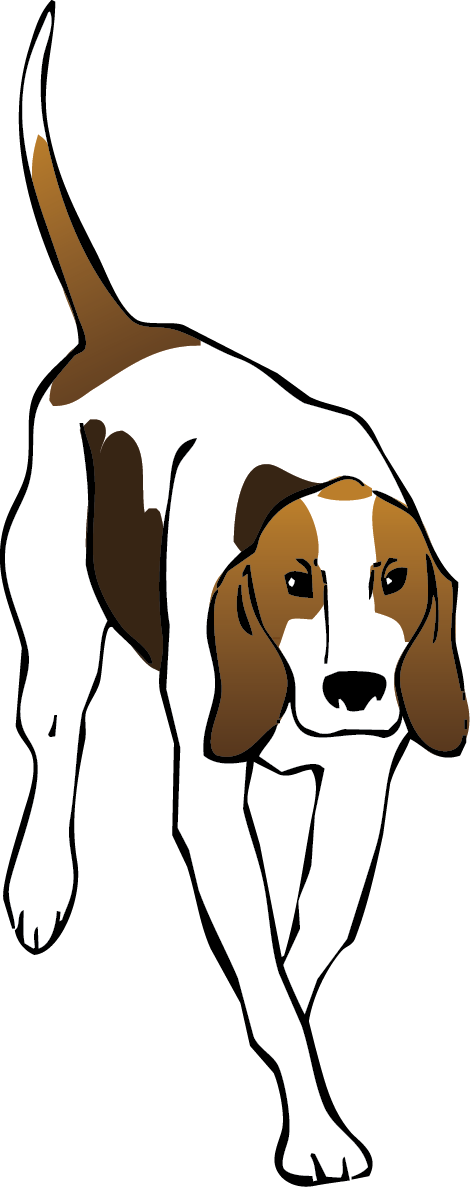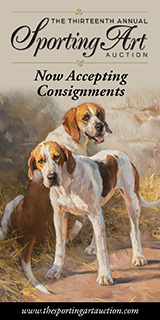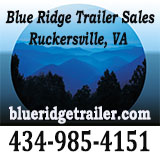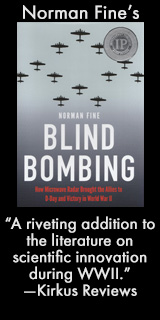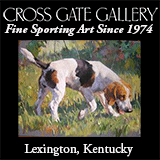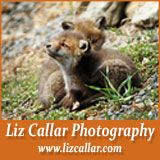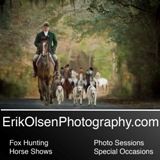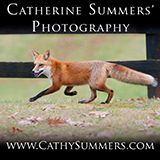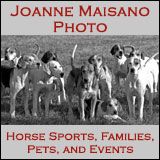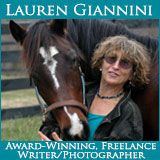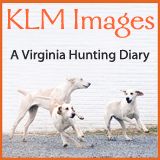Alexander Mackay-Smith
Two-Part Edward Troye Exhibit at NSL&M
The National Sporting Library and Museum (NSLM) in Middleburg, Virginia has mounted a comprehensive exhibit in two parts: the paintings of Edward Troye and the archives of his biographers, Harry Worcester Smith and Alexander Mackay-Smith. The paintings (on view in the Museum) and the archives (exhibited in the Library) may now be seen through March 29, 2015.
Troye played an important role not only in American art but also in preserving the images of leading American Thoroughbreds of the nineteenth century. Highlights of the exhibit include many of Troye’s most recognized portrayals of important racehorses, jockeys, and trainers of the antebellum period.
Edward Troye, Harry Worcester Smith, and Alexander Mackay-Smith: Archival Research Connects the Dots
Edward Troye gained artisitic renown painting America's greatest bloodstock of the mid-twentieth century. / 1872 photographic print, National Sporting Library and Museum Archives, Harry Worcester Smith papersFoxhunting Life is proud to publish this preview of the stories behind one of the most important exhibition of the works of Edward Troye ever mounted.
It is said that “traces of the soul can be found in boxes in the archives.” Where letters, scrapbooks, newspaper clippings, jotted notes-to-self and snippets of individuals’ lives are kept, distractions lurk and surprises are inevitable. And patience is rewarded with a story.
The archives of the National Sporting Library and Museum in Middleburg, Virginia contain the story of three men whose lives spanned two centuries, whose interests overlapped, and whose souls were kindred: Artist Edward Troye (1808-1874), the indomitable sportsman Harry Worcester Smith (1864-1945), and the scholar, chronicler, and author Alexander Mackay-Smith (1903-1998).
The Accident that Saved Countless Concussions
Caroline Treviranus and Comic Relief / Leslie Treviranus photo
Caroline Treviranus and Comic Relief were an experienced horse/rider team at the 1978 World Championship Three-Day competition in Lexington, Kentucky. It was Caroline’s second World Championships representing the United States, and she had ridden Comic Relief to Horse of the Year status two years earlier.
As the pair entered the stadium jumping arena for the third and final phase of the competition—having completed the dressage and cross country phases—they were standing in fifth place. A few minutes later Caroline lay unconscious in the grass, bare-headed. Her hunt cap—traditional headgear for all show riders at the time—had parted company with her in mid-air, and a whirling fence rail struck her head.
What followed was evacuation by helicopter, two weeks in a coma, and months of rehabilitation for Caroline. What resulted in quick succession for the rest of us were mandates by the United States Pony Club, the United States Combined Training Association (USCTA), and the American Horse Shows Association for the wearing of approved safety helmets. Eventually, as riders became used to wearing safety helmets, their use was adopted by foxhunters and approved as acceptable, indeed recommended attire.
Drag Hunting: From Racing to Simulating the Hunt
 Mrs. Louise Eustis Hitchcock, MFH and huntsman of the Aiken Drag Hunt and Mr. Thomas Hitchcock / Courtesy Hitchcock Woods Foundation
Mrs. Louise Eustis Hitchcock, MFH and huntsman of the Aiken Drag Hunt and Mr. Thomas Hitchcock / Courtesy Hitchcock Woods Foundation
Drag hunting was once a gloriously competitive sport, the roots of which go back to seventeenth-century England. During the reign of King James I (1603–1625), it began as a sport known as running a train scent. A “drag was laid, hounds were put on the line, and ran it at a racing pace. The horse in the lead at the end of the drag was declared the winner,” wrote the late Alexander Mackay-Smith in his Foxhunting in North America.
Later in the same century, during the reign of King Charles II (1649–1685) , a gentleman could enter his hound or hounds to compete for the Woodstock Plate, a race for hounds following a four-mile drag as a test of both the hound’s speed and its ability to follow a scent. When houndsmen and spectators discovered that the best and, not incidentally, the most enjoyable way to follow the hound race was on horseback, the sport of drag hunting was born according to John Philip Hore in his History of Newmarket.
Even Hugo Meynell, the father of modern foxhunting, played his part in drag-hunting history when, in 1763, he participated in a celebrated hound match in the form of a drag hunt between his Quorn Foxhounds and those of Mr. Barry’s Cheshire Foxhounds. By the nineteenth century, the notion of a guaranteed, sustained gallop over jumps appealed to many sportsmen, especially those who mainly hunted to ride.
Cleveland Bays Come “Home” to Farnley
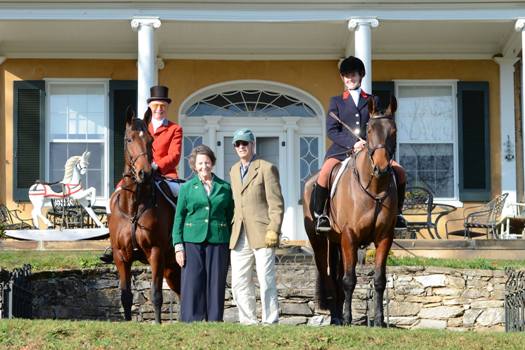 l-r: Organizer Peter Cook, Blue Ridge Hunt; hosts Hettie Mackay-Smith Abeles and Dr. Matthew Mackay-Smith; Denya Dee Leake, honorary whipper-in, Old Dominion Hounds, step-granddaughter of Alexander Mackay-Smith / Liz Callar photo,
l-r: Organizer Peter Cook, Blue Ridge Hunt; hosts Hettie Mackay-Smith Abeles and Dr. Matthew Mackay-Smith; Denya Dee Leake, honorary whipper-in, Old Dominion Hounds, step-granddaughter of Alexander Mackay-Smith / Liz Callar photo,
It's been nearly seventy-five years since Alexander Mackay-Smith's Farnley Farm in White Post, Virginia was home to a herd of some fifty Cleveland Bays. In his travels, Mackay-Smith had discovered the ancient breed of coach horse in the northeast of England and became convinced they would make ideal field hunters. He imported breeding stock, encouraged Tom and Marilyn Webster of the Idle Hour Stud to buy and stand Rambler’s Renown (who was to become North America’s leading sire of Cleveland Bays), and re-introduced the endangered breed to a new generation of horsemen and women in this country.
Farnley was once again in its bay glory on Saturday, November 16, 2013 as a record number of twenty-one Cleveland Bays (seven purebreds and fourteen part-breds) gathered at the invitation of Mackay-Smith’s children, Hetty Mackay-Smith Abeles and Dr. Matthew Mackay-Smith; Cleveland Bay breeder Peter Cook; and the Masters of the Blue Ridge Hunt for a celebration of the legacy that Farnley has left to the Cleveland Bay breed in North America.
Hetty Abeles and Dr. Matthew Mackay-Smith greeted the Cleveland Bay delegation and welcomed them back to Farnley as they assembled for a photograph in front of the house. Blue Ridge Joint-Master Anne McIntosh gave the official welcome on behalf of Joint-Masters Linda Armbrust and Brian Ferrell, after which participants divided into three flights and trotted up the lane to the first covert.
Who Is This?
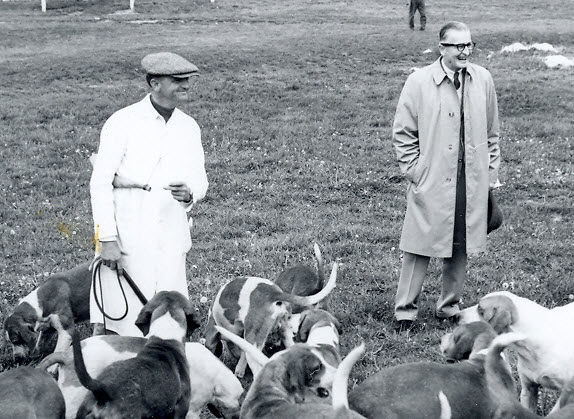 Or more to the point, who are these two giants of foxhunting? One is revered for his uncanny rapport with hounds; the other is remembered for his imaginative contributions to the world of horse sports and sporting scholarship.
Or more to the point, who are these two giants of foxhunting? One is revered for his uncanny rapport with hounds; the other is remembered for his imaginative contributions to the world of horse sports and sporting scholarship.
This puzzle was posted on our Facebook page, and Carey Shefte was the first person to correctly identify both men and claim the prize. Foxhunting Life is sending Carey a CD of foxhunting songs collected by one of our mystery men. Read on for the answers!
Special Offer: The Songs of Foxhunting
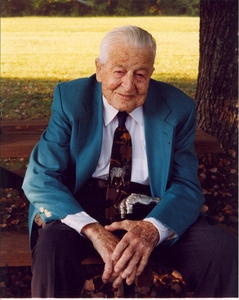 Brand New, First Edition (1974), signed by the author
Brand New, First Edition (1974), signed by the author
“Foxhunting and music are as inseparable as bread and butter, whether it be the music of hounds, of the horn, or of ‘John Peel,’” wrote the late Alexander Mackay-Smith in the preface to his book The Songs of Foxhunting.
Mackay-Smith spent ten years collecting the music, the lyrics, seventy-seven illustrations, and the background and color behind twenty songs that foxhunters have loved to sing for over two centuries. The book was published in 1974 by the American Foxhound Club.
Through the courtesy of Mrs. Mackay-Smith, Foxhunting Life is proud to offer a limited number of brand new, first edition, signed-by-the-author copies directly from our Bookstore.
Cleveland Bays (and the Blue Ridge foxhounds) Meet at Farnley
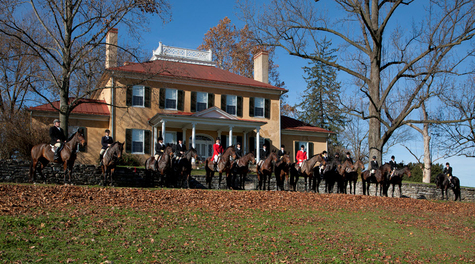 Fifteen Cleveland Bays convened for a celebration of the breed at a special meeting of the Blue Ridge foxhounds at Farnley. / Matthew Klein photo
Fifteen Cleveland Bays convened for a celebration of the breed at a special meeting of the Blue Ridge foxhounds at Farnley. / Matthew Klein photo
How fitting that a large contingent of Cleveland Bay horses should convene at Farnley Farm for a special foxhunt with the Blue Ridge Hunt on Saturday, November 19, 2011.
The late Alexander Mackay-Smith, a past Master of the Blue Ridge, and his wife Joan purchased Farnley, near White Post, Virginia, in the 1930s. During Mackay-Smith’s travels in England over that decade he decided that the Cleveland Bay horse made the ideal field hunter. He imported and bred Cleveland Bays and introduced the breed to foxhunters and to other horsemen in this country.
Today the breed is dangerously rare, with only about five hundred purebreds in the world and less than two hundred in North America.
Does Your Hunt Have a Song?
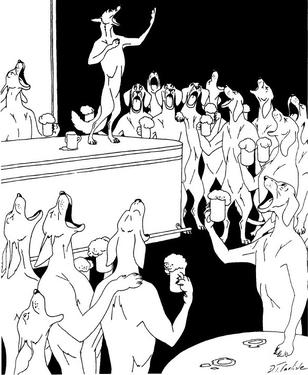 Belvedere Hounds drawn by D.T. CarlisleContinuing with our musical theme—songs of foxhunting—does your hunt have a song? Mine does. Yours could, too.
Belvedere Hounds drawn by D.T. CarlisleContinuing with our musical theme—songs of foxhunting—does your hunt have a song? Mine does. Yours could, too.
Somewhere around fifty years ago, the late Alexander Mackay-Smith, MFH found himself confined to the hospital with a broken leg from a hunting accident. With time on his hands, he set about composing a hunting song for his hunt. He took the music and theme of a popular hunting song, “Reynard the Fox,” and rewrote the lyrics using well-known places, features, and people from the Blue Ridge Hunt.
Plagiarism? Of course not! Virtually all the traditional hunting songs we know are retreads of even more ancient English and Irish nursery songs or folk tunes with hunting lyrics set to them.
If you have a poet in your hunt, give him or her our new CD, Songs of Foxhunting, and download the hunting songs—music and lyrics—from the website. Ask your lyricist to choose one of the tunes and rewrite the lyrics to memorialize a great hunt, to honor a special member, or to sing the praises of a revered Master.
Songs of Foxhunting—Country Style
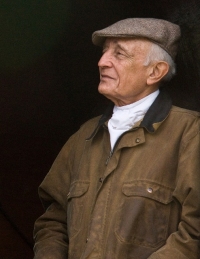
Karen Myers photo
Foxhunting songs with a purely American accent! Would you like to hear a sample? Download lyrics and the MP3 audio file and listen to Coyote Line by Edwin Hall—authentic Americana. If you have the lyrics in your hand and the music playing, you won’t be able to resist joining in on the chorus! Coyote Line is just one of ten songs in Ed Hall's CD, Meeting in the Morning, available now in our Bookstore.
Also available as promised is a new CD production of Alexander Mackay-Smith's The Songs of Foxhunting---a collection of twenty traditional songs, including John Peel; Here’s a Health to Every Sportsman; Drink Puppy, Drink; The Fox Went Out on a Chilly Night; and many more favorites. There’s too much joy in singing to let those old songs fade away. Not only have they been sung for hundreds of years, but most of them are based on lyrics from the hunting field put to even older English and Irish music. In short, they’re ancient. But let's go back to Ed Hall and his country music.
